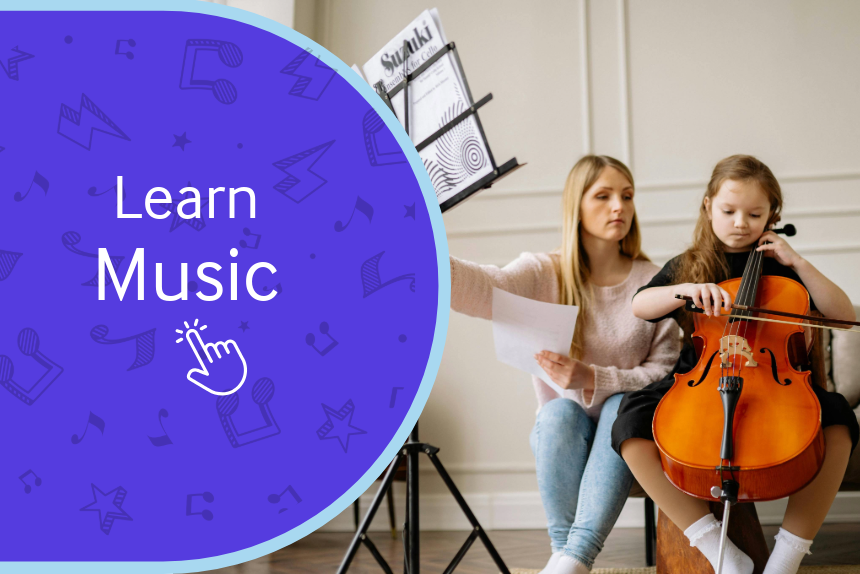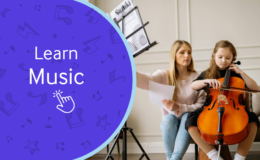
About Course
This course introduces young children (ages 4-7) to the basics of music. The focus is on exploring sound, rhythm, melody, and musical expression through interactive activities, simple instruments, and playful learning.
Course Duration
Week 1: Introduction to Music and Sound
Objective: Familiarize children with the concept of music and different types of sounds.
Content:
What is music? Exploring the idea of music as organized sound.
Introduction to loud vs. soft sounds, high vs. low sounds.
Activities:
Listening to different types of sounds and identifying them (e.g., animal sounds, musical instruments).
“Sound Walk” where children listen to and identify sounds in their environment.
Creating sounds using everyday objects (e.g., tapping on a table, shaking a container with beans).
Week 2: Exploring Rhythm
Objective: Introduce the concept of rhythm and beat.
Content:
Understanding rhythm as a pattern of sounds.
Clapping, tapping, and moving to a steady beat.
Activities:
“Clap the Beat” games where children clap along to a steady beat.
Playing with rhythm sticks or hand drums to explore different rhythms.
Movement activity where children march or dance to different rhythmic patterns.
Week 3: Discovering Melody
Objective: Introduce the concept of melody and pitch.
Content:
Understanding melody as a sequence of pitches.
Introduction to high and low pitches.
Activities:
Singing simple songs with a clear melody (e.g., “Twinkle, Twinkle, Little Star”).
Playing a xylophone or keyboard to explore high and low notes.
“Echo Singing” where the instructor sings a short melody and children echo it back.
Week 4: Introduction to Musical Instruments
Objective: Familiarize children with different musical instruments and their sounds.
Content:
Introduction to basic instruments: percussion, strings, wind, and keyboard.
Understanding how different instruments produce sound.
Activities:
“Instrument Exploration” where children try out different instruments.
Matching game where children match the sound to the correct instrument picture.
Simple group play-along using percussion instruments (e.g., tambourines, shakers).
Week 5: Singing and Voice Exploration
Objective: Encourage children to use their voices as musical instruments.
Content:
Understanding the voice as an instrument.
Exploring different vocal sounds (e.g., loud, soft, high, low).
Activities:
Singing familiar songs as a group.
Vocal games where children imitate sounds (e.g., animal noises, sirens).
“Call and Response” singing, where the instructor sings a phrase and the children respond.
Week 6: Introduction to Simple Music Notation
Objective: Introduce basic music notation concepts.
Content:
Understanding that music can be written down using symbols (notes, rests).
Introduction to simple rhythmic notation (quarter notes, rests).
Activities:
Drawing and clapping simple rhythms using quarter notes and rests.
“Music Notation Matching” where children match notes to their corresponding sounds.
Creating a simple rhythm pattern on paper and clapping it out as a group.
Week 7: Musical Expression and Creativity
Objective: Encourage creative expression through music.
Content:
Understanding how music can express different emotions (happy, sad, excited).
Exploring dynamics (loud and soft) and tempo (fast and slow) in music.
Activities:
“Emotion in Music” activity where children listen to different pieces of music and identify the emotions they express.
Creating a simple musical piece using percussion instruments, exploring dynamics and tempo.
Improvisation game where children take turns creating short musical phrases on instruments.
Week 8: Review and Music Showcase
Objective: Reinforce learned concepts and celebrate the children’s musical achievements.
Content:
Review key concepts: sound, rhythm, melody, instruments, voice, music notation, and expression.
Prepare for a short music performance to showcase what they’ve learned.
Activities:
Rehearsing songs and rhythm patterns for the showcase.
Group performance where children play instruments and sing.
Awarding certificates for participation and musical creativity.








